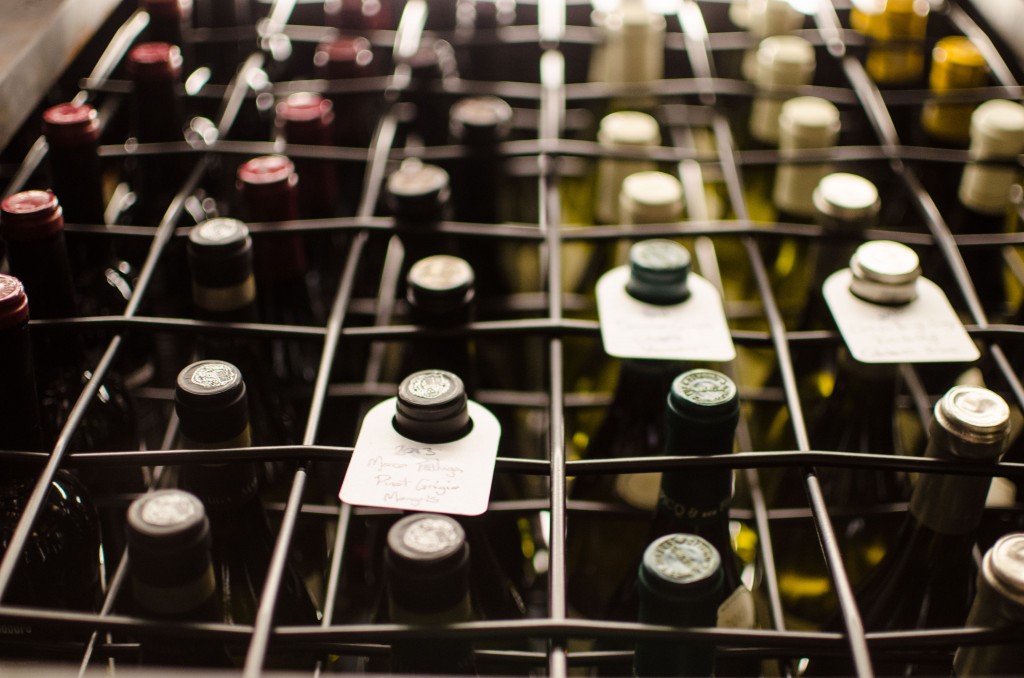
China’s wine market is as riddled with pitfalls as it is exciting. The Chinese thirst for wine is notoriously insatiable with both money and growth fueling it, this has created a thriving market – but one that definitely has its own peculiar set of challenges.
None more peculiar than the prominent presence in the market of not fake but “lookalike” wines. Brands that don’t claim to be an exact copy of Latour but are instead La Ture, Latour’s long-lost cousin, or so the branding would imply. This association is the real fakery. By using oh-so-similar branding – down to a slightly more generic tower image – the consumer is lulled into thinking either that it’s a genuine Latour or it’s at least under the same umbrella. And the contents if not the same, will be very, very similar, or so the packaging suggests. How prevalent is this problem and how deep do you need to dig to encounter it?t With bustling trade fairs in Hong Kong, Guangzhou, Chengdu and Shanghai, a simple trip to one reveals all.
The import statistics are again showing robust growth, with bottled imports seemingly holding their growth rates at a robust 14 percent – Australia leads the pack at 30 percent. Whilst Australia’s volume growth has been exceptional, the average price per bottle has slipped by 20 percent (over the corresponding period). But that’s not the whole picture. If you take a closer look, Penfolds, which has been enjoying a runaway success in China, represents almost 25 percent of Australia’s imports at premium price points. Behind those headline figures there are some worrying trends that directly challenge the relatively novice Chinese wine consumers to find good wines at fair prices on the shelves of both online and offline retailers.
A brief tour at a Shanghai wine show in November provided some insight – at many of the booths exhibitors headlined their “Authentic Brand” whilst quietly offering a range of “Buyer’s Own Brand” options at seriously low prices – AOC Bordeaux at €1.80 ($2.25) per bottle, Australian Shiraz from AU$2 ($1.60) with a variety of labels, and packaging options. One of the biggest bulk bottlers displayed the all too ironic phrase “Absorption in Global Wine Supply” – if China is on course to drain the various wine lakes around the world then there is no shortage of traders and retailers in mainland China who will create a disposal brand that looks and sounds like a world-leader but is made from the simplest of origins.
While many of the sensational news stories one hears about China’s wine market revolve around the problem of fake bottles of famous names, the real threat to your average Chinese wine consumer is the raft of “lookalike” brands that are increasingly entering the market. A brief look around the biggest offline stores in Shanghai – some foreign owned and some local, tells a depressing tale – “Byfolds” branded in full Penfold’s livery, “Lafei Manor” (Lafei is the Chinese pronunciation of Lafite) in correspondingly familiar DBR colours and a raft of others – some subtle some not but it does seem to this wine lover’s eyes that the losers in all of this are the consumers.
While major global brands should be congratulated for bringing their history, stories and globally recognized wines with them, the reality is that behind the top 10 comes an enormous tail of dross that fills the offline shelves of China’s retail landscape. The only function of these wines and “lookalike” labels is to dupe the customer into paying a premium that the packaging, labelling and price that an “authentic retailer” would expect – sadly that is not what’s in the bottle. While Alibaba and the likes keep out the actual fakes they are powerless to stop cynical marketers and sales organizations from pumping “lookalike” brands through their considerable networks. In a mature market, like the UK or Australia, there are checks and balances, gatekeepers and experienced buyers to build, maintain and defend the reputations of the retailer. If you were to buy a regional wine from Tesco’s in the UK or Dan Murphy’s in Australia for example – you would do so in the knowledge that a team of buyers would have worked on that project with the producer to reach a certain quality standard that would stand the test of an expert panel and be priced accordingly.
Retailers and distributors are aware of these issues and work hard to combat them. A spokesperson from Treasury Wine Estates concurred: “TWE has driven huge success in China, particularly through the growth of our global luxury Penfolds brand. With this success, comes the challenge of illegal copycat producers who infringe on our famous trademarks – this is an issue for many premium and luxury brands. We are aware that some of this copycat wine is being exported out of Australia, as well as being produced in China and other countries. It is therefore critical that genuine producers and third party packagers take action, along with authorities and the wider industry, to stop the production and exportation of illegal copycat wine, to ultimately protect the reputation of Australian wine. TWE has a strategy in place to fight this, and we are continuing to aggressively protect the integrity of our brands.”
In China there is just a rampant cynicism that does nothing to improve the experience of a thirsty population of wine consumers. Perhaps this is just the state of play in the market and a reality check for brands and importers looking to play in China – the costs of doing business both online and offline are rising rapidly, online marketing and the cost to market effectively in a fiercely competitive field are not going away. If you add in to this mix the huge quantities of wine that have been imported by opportunists who have since dumped their products at cost or a loss then the whole picture becomes even more complex.